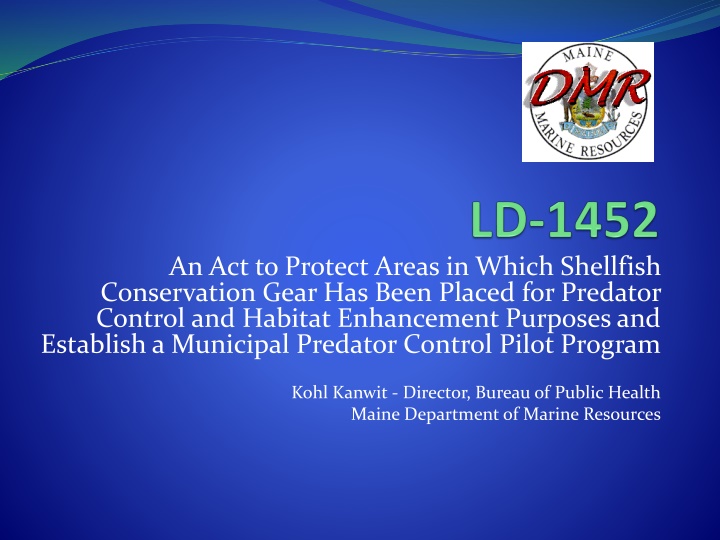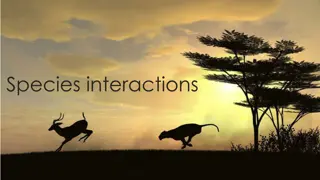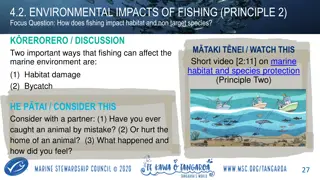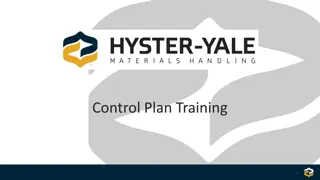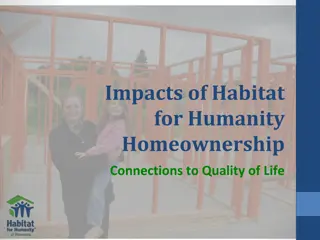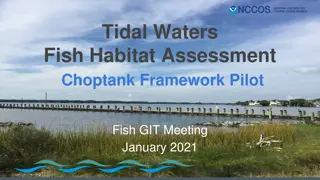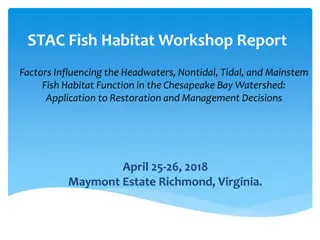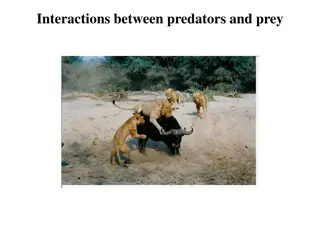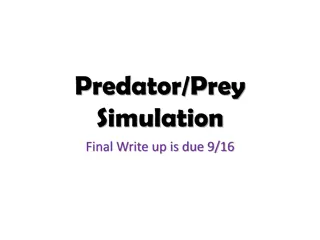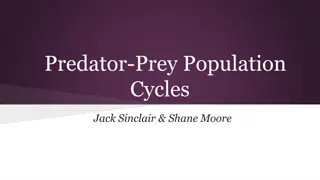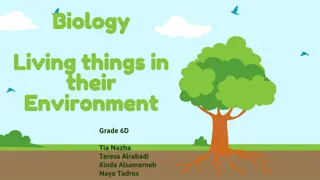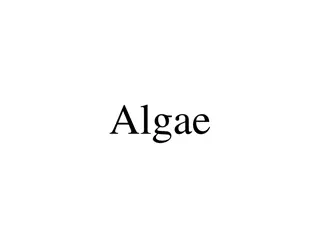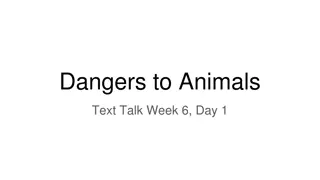An Act to Protect Areas for Predator Control and Habitat Enhancement Purposes
LD1452 is a legislative act aimed at protecting areas where shellfish conservation gear is placed for predator control and habitat enhancement. The act establishes a municipal predator control pilot program to address the impact of green crabs on soft clam populations. It prohibits the molestation of shellfish gear, authorizes predator control pilot projects to increase survival rates, and mandates the development of predator control strategies for green crabs. Violators face fines, and the pilot projects sunset on February 28, 2015.
Download Presentation

Please find below an Image/Link to download the presentation.
The content on the website is provided AS IS for your information and personal use only. It may not be sold, licensed, or shared on other websites without obtaining consent from the author.If you encounter any issues during the download, it is possible that the publisher has removed the file from their server.
You are allowed to download the files provided on this website for personal or commercial use, subject to the condition that they are used lawfully. All files are the property of their respective owners.
The content on the website is provided AS IS for your information and personal use only. It may not be sold, licensed, or shared on other websites without obtaining consent from the author.
E N D
Presentation Transcript
An Act to Protect Areas in Which Shellfish Conservation Gear Has Been Placed for Predator Control and Habitat Enhancement Purposes and Establish a Municipal Predator Control Pilot Program Kohl Kanwit - Director, Bureau of Public Health Maine Department of Marine Resources
History of LD1452 Originally proposed by Sen. Gerzofskyas An Act to Allow Municipalities with Shellfish Conservation Ordinances To Request Permission To Prohibit Marine Worm Harvesting Hearings turned out hundreds of attendees DMR supported banning molestation of predator control gear
LD1452 as implemented Preamble recognizes the importance of both the soft shell clam and marine worm industries Preamble also recognizes the role of green crabs in the dramatic declines in soft clam populations Sec. 1 establishes a prohibition on molestation of shellfish gear Sec. 2 establishes a predator control pilot project Sec. 3 establishes the requirement for a report to the standing committee before January 31 on predator control strategies to mitigate the effects of green crabs
Sec. 1 A municipality, as part of a shellfish conservation program, may place protective netting, fencing, traps or other gear in the intertidal zone. This gear must be clearly marked. A person may not tamper, molest disturb, alter or destroy protective gear Violation will lead to fines between $300-$1000. This section (10-B.) DOES NOT sunset Subsection 10-C relates to the predator control pilot projects and sunsets February 28, 2015
Sec. 2 Authorizes pilot projects to determine the effectiveness of predator control in increasing survival of soft shell clams and marine worms The Commissioner may approve up to 4 municipal projects (more could be approved but not allowed to ban worm harvesting) Requirements were: marking, maintaining gear and notification of closures and openings This section DOES sunset February 28, 2015
Sec. 3 The Commissioner (or representative) will develop with the cooperation of clam and worm industries predator control strategies for green crabs Must identify the needs of the clam and worm industries Recognize both industries have an economic interest in properly managing the intertidal zone in a way that does not disadvantage either group Present the strategies to the standing committee no later than January 31, 2015
Brunswick, Freeport, Harpswell and West Bath
Brunswick Permit issued May 19th Project implementation date was delayed to provide time to communicate with worm industry Closed Woodward and Buttermilk Coves Objective was to compare fenced to unfenced areas in combination with trapping Fencing was difficult and expensive, netting TBD Trapping can be successful, but numbers of green crabs were much lower in 2014 v. 2013
West Bath Permit issued May 20th Closed Browns Cove Testing effectiveness of easily replicated/implemented predator control programs (traps and nets) Trapping can work, timing of nets is critical if you are trying to catch natural sets
Freeport Permit issued June 4th Closed Staples, Spar, Recompense and Collins Coves as well as part of the shore near Wolfs Neck SP Objective was to compare different predator control methods along with enhancement activities (fencing, netting and trapping; seeding, settlement enhancement using substrate, pH etc) Fencing was difficult and expensive, netting is effective, trapping can be effective, other results unknown
Harpswell Permit issued June 13th Closed Strawberry Creek Objective was to remove green crabs by trapping and milky ribbon worms with hand digging Establish several treatments to study recruitment/enhancement/survival Trapping can be successful, but numbers of green crabs were much lower in 2014 v. 2013, netting TBD
Two Questions How effective do you think the predator control strategies were? Netting and trapping are best What benefit did you observe as a result of the authority to prohibit other resource harvest activities? Eliminated the variable of harvest activities within a study area that could impact success/survival/recruitment etc
Project Concerns Effective communication between industries and municipal officials Mailings sent the day of the closure No posting of the area(s)/false posting of area(s) The scientific rigor of the studies most didn t outline objectives well in application process some didn t do what they proposed some added additional parameters during the studies evaluation of effectiveness has not been done Low numbers of green crabs complicated the studies LD1452 title: .and habitat enhancement purposes..
with cooperation of the soft shell clam and marine worm industries and other interested parties
Predator Control Strategies for Green Crabs Netting Trapping Fencing (not recommended) What other ideas tested or untested are there?
Needs of the Clam and Worm Industries What are the needs of the clam industry specifically with regard to predator control? Additional research to evaluate predator control methods that work Research to identify what effects recruitment and survival (environmental conditions and human impacts)
Needs of the Clam and Worm Industries What are the needs of the worm industry specifically with regard to predator control? Research to identify what effects recruitment and survival (environmental conditions and human impacts)
What is the Problem? Not enough clams in many historically productive areas: Overharvest/human disturbance Predation Environmental conditions (pH, temperature, habitat loss, water quality) Disease Lack of mobility for clam harvesters
Possible Solutions Increased conservation activities (seeding, netting, surveys, harvest controls) Designated research areas closed to all harvest Research on the impacts of other harvest activities (especially worm) on clam populations Documentation of harvesting practices for both clam and worm industries Municipal aquaculture
Not the First Time.. August 1997 Maine Soft Shelled Clam Advisory Council: Clammer/Wormer Conflict is a priority , some flats are being turned six times by wormers this was itself a re-visit of conflict in the Brunswick area that resulted in DMR closing 1/3 of the town flats to worming, Brian Beal conducted a study: Short-term Effects of Commercial Clam (Mya Arenaria) and Worm (Glycera Dibranchiata) Harvesting on Survival and Growth of Juveniles of the Soft-Shell Clam
Not the First Time..ctd. October 1997 MSSCAC formed a Clammer/Wormer Conflict Resolution Working Group (Sherman Hoyt, Peter Angis and Brian Beal) Several members of the Wormers Association and elected representatives were asked to attend the October 30, 1997 meeting to mediate the St. George issues
Not the First Time..ctd. March 16, 1998 MSSCAC reports there were 6 meetings of the Conflict Resolution sub-group and many felt progress was being made. Recommendations were limiting [first worm then all] harvest and establishing a test site General condenses that the worm industry would not react favorably The group will one day have a recommendation for DMR and the MSSCA to look at Kenny Goodnow: there needs to be some data upon which to base any changes in policy or regulation
Not the First Time..ctd. February 2, 2000 Draft report of Clammer/Wormer Conflict Resolution Workgroup submitted to MSSCAC Held 10 workgroup meetings Three zone, 30 day rolling closure plan in the St. George was implemented April 8, 1998 repealed April 30, 1998 (the work group process had failed to represent the worm industry ) A contact list was developed and was viewed as a useful tool
Conflict Resolution Workgroup Conclusions and Recommendations Local conflicts are best resolved locally if possible Site specific conflicts that are not resolved locally should be addressed by the MSSCAC DMR regulatory power should be a last resort, it will likely increase conflict rather than resolve it MSSCAC should use the contact list and reach out to the worm industry Face to face participation by the worm industry is essential Statewide legislation should be avoided
